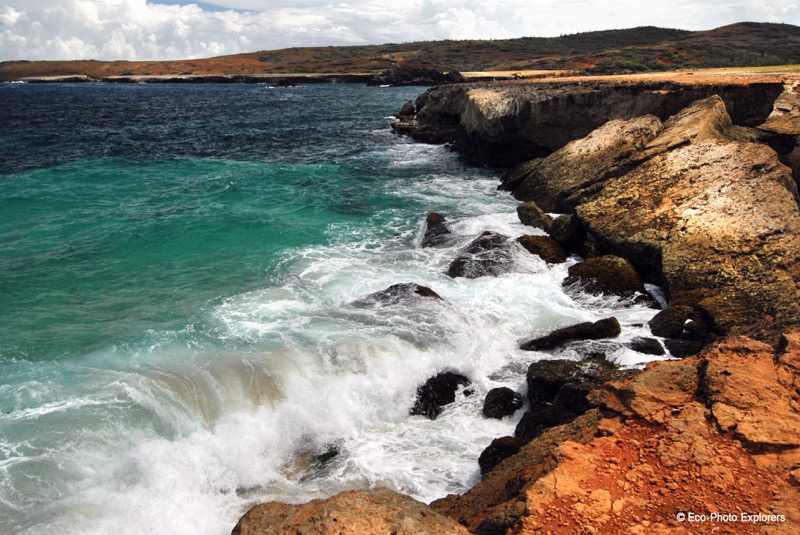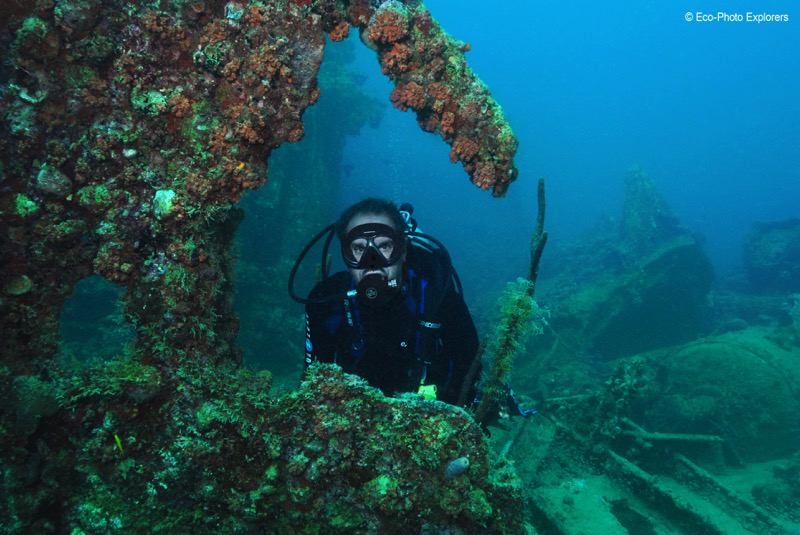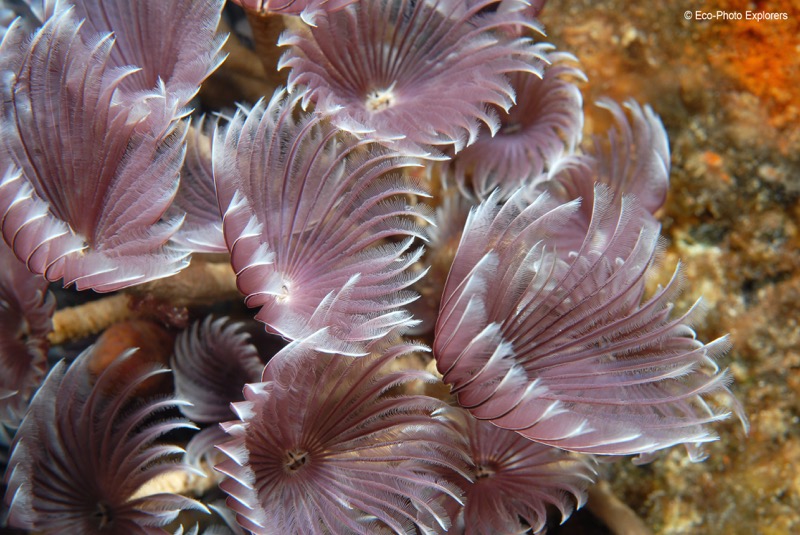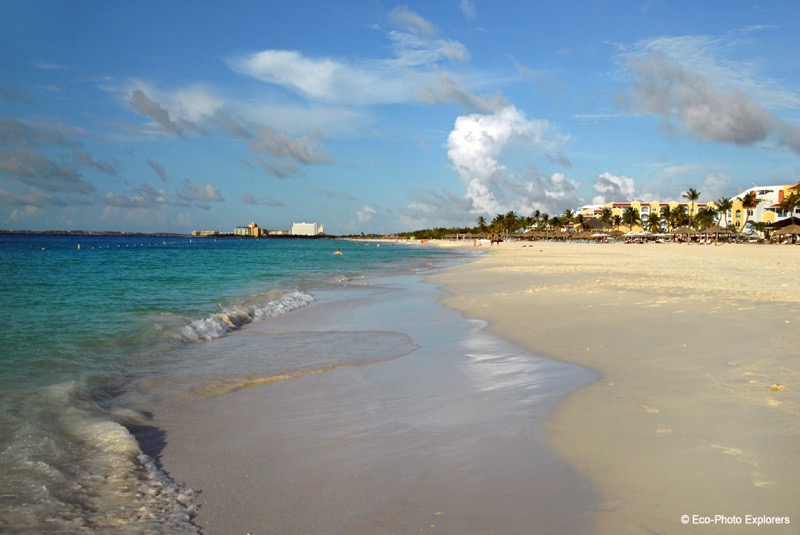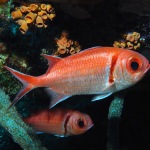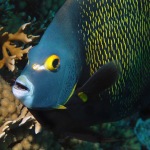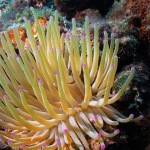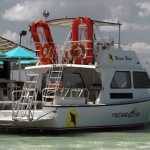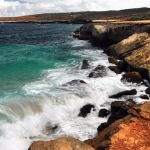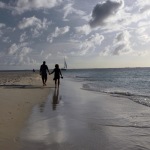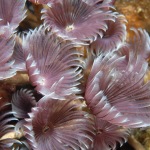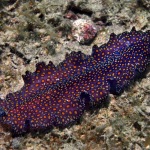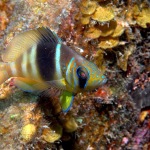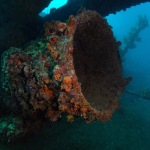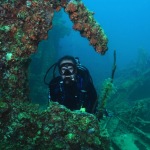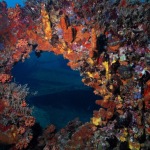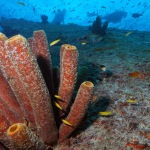Aruba is the “A” in the ABC islands of Aruba, Bonaire and Curacao. Bonaire often garners the most attention from the diving community with its fabulous shore diving and world-class reefs. And Curacao has mounted a successful advertising campaign to tout its own beguiling reefs and wrecks.
Aruba, on the other hand, is often associated with spectacular beaches, fine dining and exhilarating casino gaming.
But is Aruba a dive destination?
That was the question on our minds as we stood on the stern of the dive boat and prepared to explore the wreck of the Antilla, one of the largest shipwrecks in the Caribbean. Currently, only the Bianca C in Grenada and the Antilles in Mustique are larger.
Text and Photography by Michael Salvarezza and Christopher Weaver (Eco-Photo Explorers)
The Antilla was a 394-foot German freighter that was scuttled in 1941 when it was threatened by allied forces in the area following Germany’s invasion of Holland. Descending 55 feet to the wreck, we immediately grasped the enormity of the site. The ship lies on its port side, with the entire superstructure a jumble of confused wreckage. Schools of grunts and snappers inhabited the dark nooks and crannies of the wreck, along with an occasional French Angelfish and Butterflyfish. On the Antilla, there is ample opportunity for penetration with wide compartments and openings beckoning the adventurous. However, divers should exercise caution: the wreck is deteriorating and beginning to collapse. Diving inside such an unstable wreck is dangerous; we opted to remain on the outside.
The Antilla is a very popular dive in Aruba and because of its relatively shallow location just offshore in Malmok Bay it also attracts snorkelers who can marvel from the surface at the enormity of the wreck. After diving the wreck, we were anxious to see what else Aruba had to offer.
Our next dive was on another wreck, the Pedernales, located in only 25 feet of water southwest of the Antilla. The Pedernales was an American flat-bottomed oil tanker torpedoed by a German submarine in 1942. Interestingly, both the bow and stern section remained afloat after the attack, which only sank the midsection of the ship. Both sections were hauled back to the United States, refitted with a new hull, and the new ship was later used as a troop transport for the Normandy invasion.
The wreck of the Pedernales is scattered across a wide section of ocean bottom. While the Antilla is popular because of its sheer size, the Pedernales fascinates because of its profusion of life. Large schools of grunts, silversides and snappers can easily be seen on this wreck, along with Trumpetfish, Angelfish, Grouper and Squirrelfish. Poking around the wreckage, divers can also spot moray eels and an occasional octopus. On our dive, we had a fleeting glimpse of a Spotted Eagle ray gliding majestically over the wreckage.
Both the Antilla and the Pedernales lie on the protected west coast of the island. With a persistent trade wind blowing from east to west across the island, the waters over these wrecks are almost always flat calm.
Travelling to the south, we next visited the wreck of the Jane Sea. Lying in 90 feet of water, the Jane Sea was a 246-foot Venezuelan cement freighter that was sunk in 1988 after it was caught with a cargo of cocaine. This is a very picturesque wreck as it sits upright on a bright sandy bottom completely festooned with hydroids, corals, sponges and other marine growth. Swimming along the open cargo bay, divers will often encounter Queen Angelfish, small grouper and Spotted Moray Eels. At the bridge, clouds of smaller reef fish can be seen while in the blue water just off the sides of the wreck Barracuda prowl the adjacent reef.
Not too far away, also in the south, is the wreck of a Convair 400 airplane, known as the Renaissance Airplane, sitting in 80 feet of water. This is an interesting diversion to the usual wreck diving. Divers can swim through the fuselage, which has been stripped of its seats and any other structure.
Besides wrecks, we found Aruba’s reefs to be intact and healthy. Large stretches of coral meadows on a gently sloping bottom characterize Barcedera Reef, with dense stands of elkhorn, brain and staghorn corals populating the reef. Looking closely, divers can find Pederson’s Shrimp and Arrow Crabs alongside purple-tipped anemone, along with Flamingo Tongue and other colorful reef inhabitants.
Harbor Reef is located off the coast of Aruba’s capital, Oranjestad, and is a favorite haunt for Parrotfish, Butterflyfish and Angelfish. Indeed, the diving here can offer more than enough to keep the underwater photographer busy.
After several days of enjoyable and varied diving, we answered our own question: Yes! Aruba is definitely a dive destination.
Aruba is one of those places, however, that has more than enough for the non-diving companions and spouses as well. Eagle Beach, with its sugar white sand and warm, gently lapping aquamarine water on Aruba’s Northwest side is often named as one of the Caribbean’s top ten beaches. There are numerous high quality restaurants, casinos and clubs available as well as interesting excursions to some of Aruba’s natural and cultural treasures.
Divers who take a break from the underwater world can visit the California Lighthouse on the northern tip of the island. The lighthouse was built in 1916 and named after the California, a passenger ship that sank nearby before the lighthouse was built.
For a different type of diversion, the Butterfly Farm gives visitors the chance to get up close and personal with some of the most dazzlingly colored Butterflies in the world. Visitors can also stop by the beautiful and serene Alto Vista Chapel, first built in 1750 and rebuilt 200 years later after being abandoned in the 1800s. The church’s ancient Spanish cross is one of the oldest European artworks in the entire Dutch Caribbean.
Aruba lies just 15 miles from the coast of Venezuela and below the hurricane belt. It is a desert climate, with few days of rain. It can be hot in the sun, but the nearly constant trade winds provide relief. Still, visitors should take precaution and be sure to avoid prolonged exposure to the sun without proper protection.
Aruba is a known sea turtle nesting ground for four species of turtles: The Leatherback, Loggerhead, Hawksbill and Green Turtle. The soft white sand of Eagle Beach is a favorite nesting location. The same qualities of this beach that attract the turtles also attract tourists…so all visitors are advised to give the turtles plenty of room and not to disturb them if they are seen on the beach. Divers will often encounter turtles on the reefs and the same protocol applies.
Sitting on the sands of Eagle Beach we watched the sun begin to slowly slip below the horizon, marking the end of another fine day of diving in Aruba. A pair of Brown Pelicans patrolled the coast, dive-bombing the water just off the beach in search of food. A gentle breeze rustled the palm fronds as we reflected on our exploration of Aruba’s underwater world. The Arubans are fond of greeting visitors with the phrase “Bon Bini”, which means, “welcome” in the local language of Papiamento. We certainly felt as if the Aruba reefs and wrecks greeted us in much the same way.
Yes, Aruba is a dive destination!
- Blackbar Soldierfish (Myripristis jacobus) make their home inside the Antilla wreck
- French Angelfish (Pomacanthus paru) are one of the most striking fish on the Aruba reefs
- Stoplight Parrotfish (Sparisoma viride) often can be found on the reefs
- Anemones make for great photos
- Aruba boasts a dry, classically tropical climate
- The Butterfly Garden on Aruba is home to many species of fascinating insects
- Red Sail Sports’ dive boat getting ready to shove off
- The California Lighthouse is named after a shipwreck that occurred nearby
- The Aruba landscape can resemble that of a desert
- The coastline on the east side of the island is rocky and dramatic
- The beaches on Aruba are some of the best in the Caribbean
- A late afternoon stroll along a serene beach in Aruba
- Social Feather Duster Worms (Bispira brunnea) grow in clusters on the reef
- A Leopard Flatworm (Pseudoceros pardalis) creeps along the bottom in search of its next meal
- A Flamingo Tongue Cowrie’s (Cyphoma gibbosum) dramatic spots are not part of its shell but are the animals mantle extended over the shell
- Barred Hamlet (Hypoplectrus puella) are shy but curious and can often be approached slowly and carefully
- Divers can encounter sea turtles, like this Loggerhead Turtle (Caretta caretta), on the reefs of Aruba
- The Antilla wreck offers much wreckage to explore
- Author Michael Salvarezza explores the wreck of the Antilla
- Divers exploring the wreck of the Antilla
- The Antilla has now become a thriving part of the undersea ecosystem
- Tube sponges and divers on the Antilla wreck
Text and Photography by Michael Salvarezza and Christopher Weaver
Visit the Eco-Photo Explorers website by clicking here.

